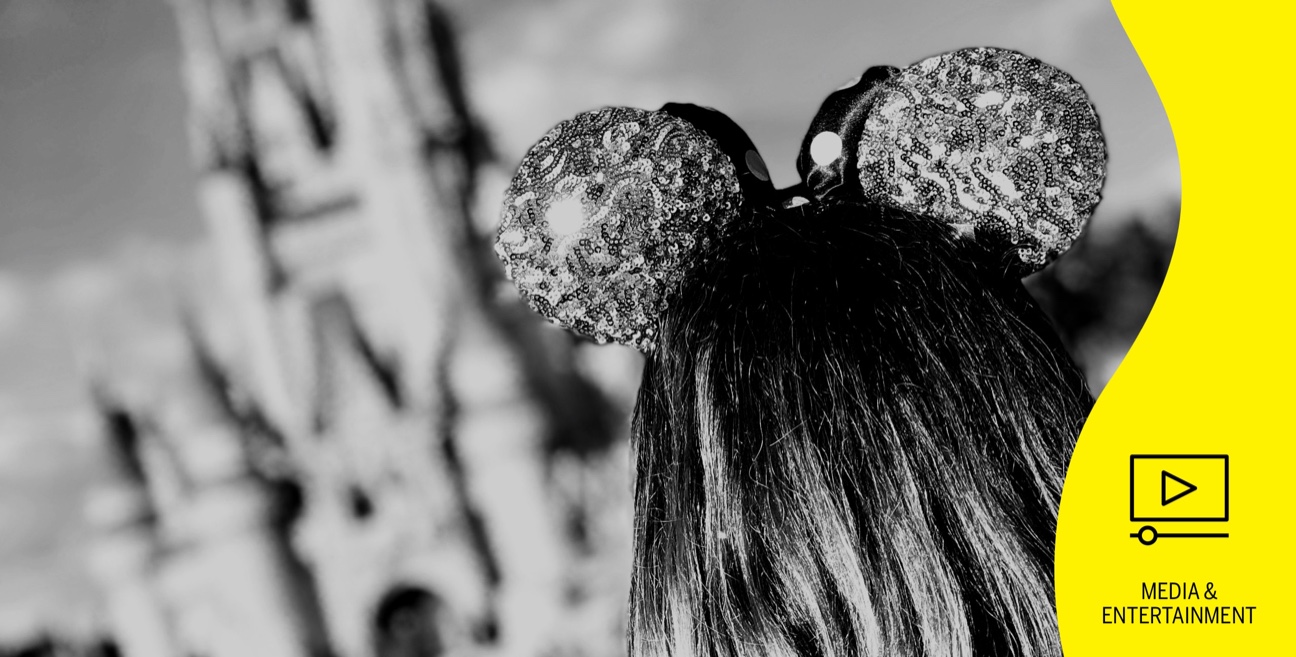Overview
- Media & entertainment is the #1 industry in the 2019 Brand Intimacy Study.
- The top brand in the industry and in the study overall is Disney, overtaking Apple.
- Disney is also the #1 brand for the nostalgia archetype and for the deepest stage of Brand Intimacy: fusing.
Our recently released 2019 Brand Intimacy Study revealed powerful findings about the role emotion plays in branding today. Among our findings, we saw several brands move up in the rankings since last year, such as Chevrolet, PlayStation, and Chick-fil-A, but the most striking improvement had to be Disney. The media & entertainment giant jumped from #5 in 2018 to #1 this year, overtaking the reigning champion of our study from the past several years: Apple.
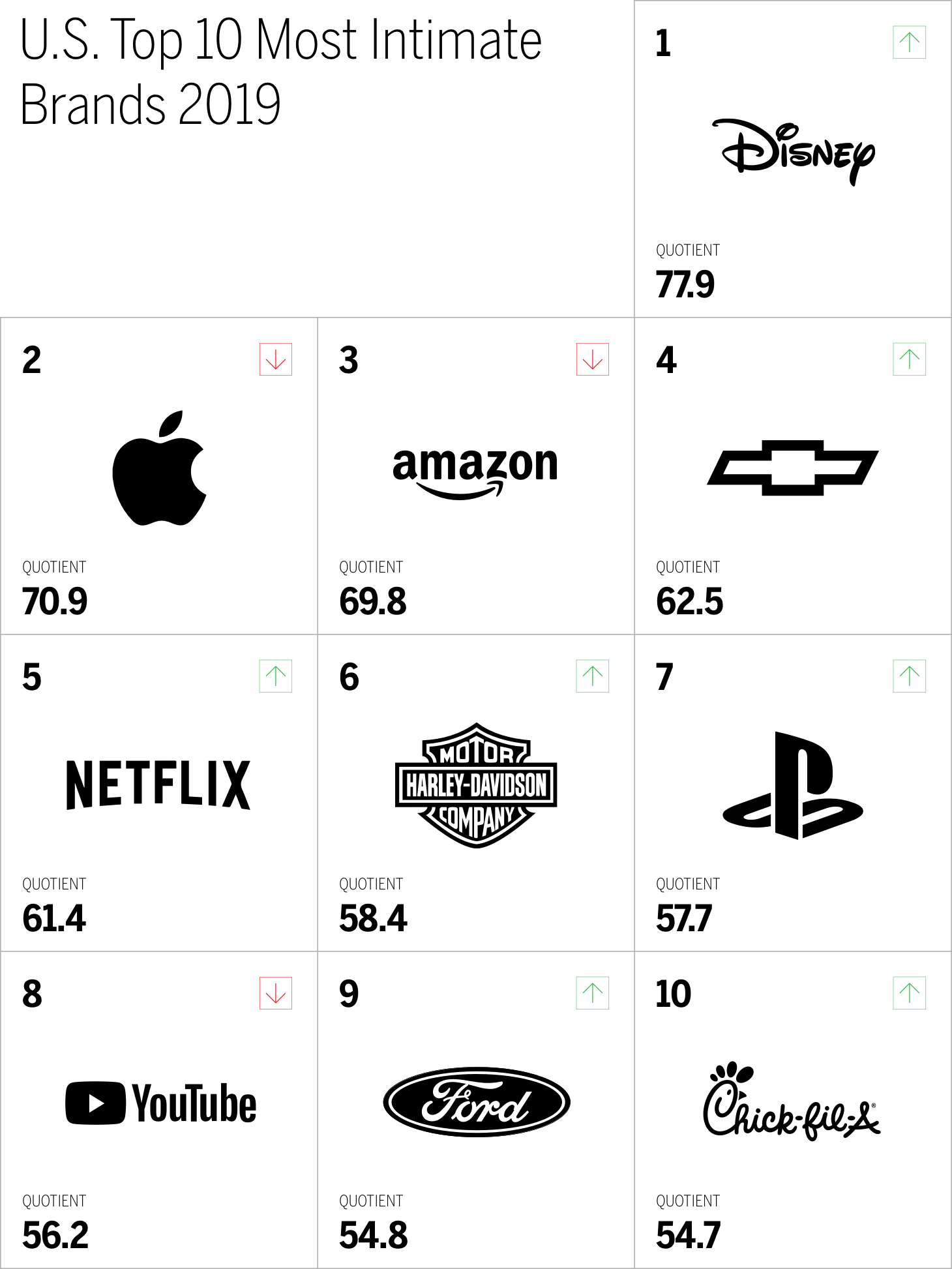
Disney’s success as an intimate brand makes sense intuitively; it’s responsible for some of the most beloved films, TV shows, characters, and theme parks in the world. For many consumers, the brand played a formative role in their childhoods and holds a lot of emotional significance from their early memories. What’s more interesting is Disney’s success in recent years. For a brand that’s built on memories of the past and family-friendly animation, Disney has adapted strongly to the modern landscape. To better understand how this iconic American brand has been able to improve its ability to build emotional bonds with today’s consumers, we’re exploring some key findings from our 2019 Brand Intimacy Study.
Escapism is in
A persistent trend over the last few years has been the growing appeal of escapism. The stresses and anxieties that come with polarization in politics, combative news cycles, and other complexities of modern life have consumers looking for ways to get away from the real world, often with the help of media & entertainment brands. People are turning to television, movies, and video games to escape reality and feel connected to something, and with the help of technology, these media are becoming increasingly personalized, available across devices and formats, and on demand.
Disney has capitalized well on this trend by leveraging properties that consumers are eager to get lost in. The brand’s Marvel and Star Wars franchises are perfect examples: they are hotbeds for nostalgia that allow viewers to revisit the past, they provide sci-fi/fantasy alternatives to reality, and their films exist within complex narrative universes, giving viewers cinematic worlds to explore and inspiring active online communities of fans, theorists, and speculators. In more ways than one—and much like Disney’s theme parks—these movies are incredibly immersive, which makes them ideal destinations for an emotional getaway. They also target an older (although broad) demographic of users who are more likely to be in need of an escape than Disney’s usual audience of children.
As reality becomes harder to handle, media & entertainment brands will continue to reap the benefits, and Disney will keep supplying consumers with movies about superheroes, Jedi knights, and whatever other entertainment franchises they end up buying.
Associations are on the rise
The Brand Intimacy archetypes are six patterns or markers that are consistently present among intimate brands and identify the character and nature of ultimate brand relationships. By examining how Disney’s scores across these archetypes have changed since last year, we are able to shed some light on its improved performance.
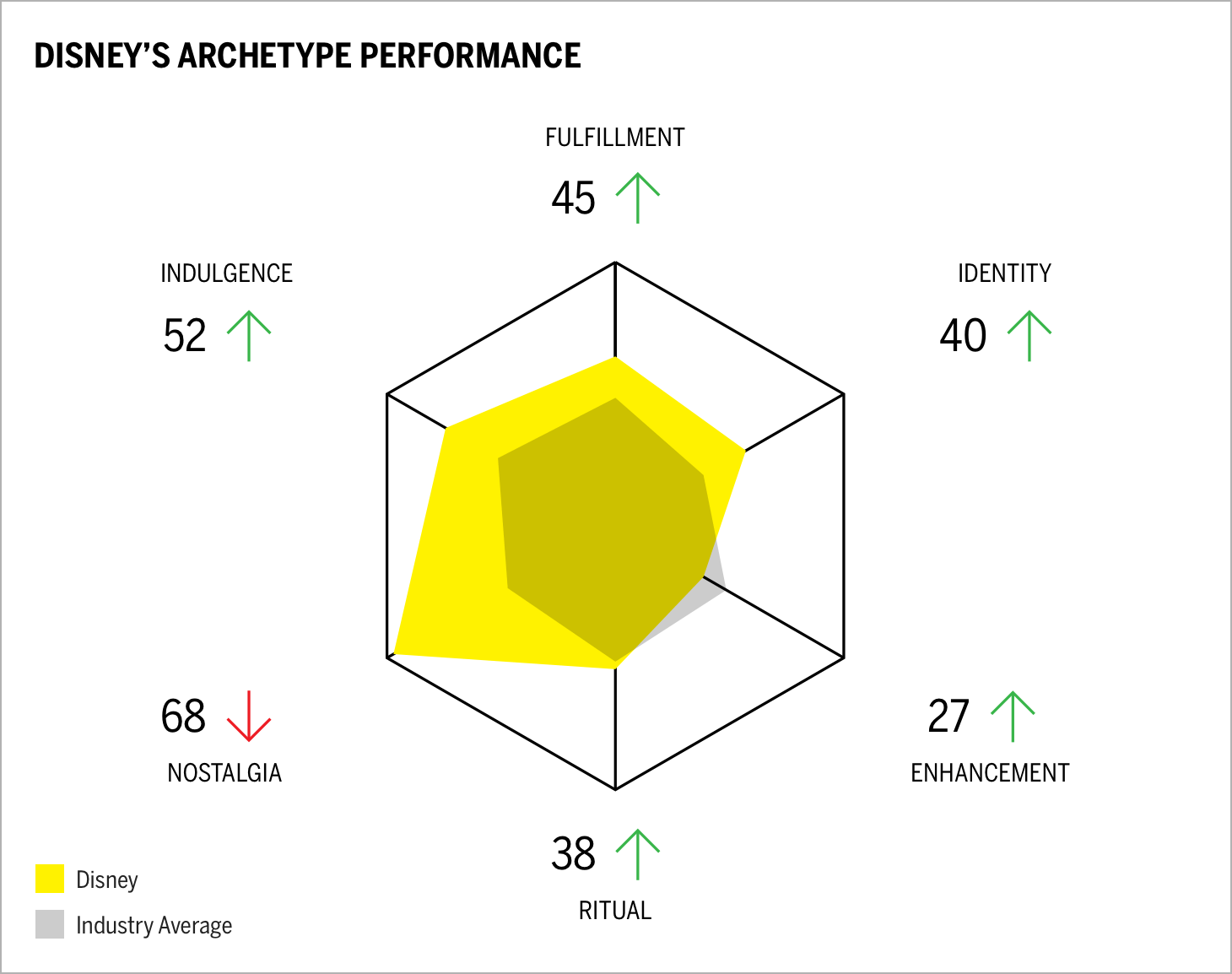
This year, Disney improved its performance in all six archetypes except nostalgia, for which it still has the highest score in the study overall. The most notable improvements were in enhancement, which is characterized as customers becoming better through use of the brand, and ritual, which is when a person ingrains a brand into his or her daily actions. Disney’s significant increase in the ritual score (from 18 to 38) is also reflected in the percentage of users who use the brand daily, which doubled from 9 percent to 18 percent this year. For a brand that has long been known for carrying strong emotional associations, such a marked improvement across a variety of archetypes indicates that consumers continue to feel strongly about this brand and are continuing to build new associations with it in 2019. Disney’s strong ties to nostalgia are undeniable, but its ability to also make consumers feel a sense of identity, fulfillment, or indulgence speaks to the emotional depth of this brand. By adding new dimension to the character of bonds users form with Disney, it has been able to achieve new levels of Brand Intimacy performance.
Men are feeling the magic
Despite Disney being a brand with a broad appeal across age, income, and gender, its success among men this year comes as a bit of a surprise. After only just making the top 20 brands for men in 2018, Disney ranked #1 among men in 2019. Disney also moved up in the ranks for women (from #3 to #2), but such a large improvement among men surely played a more significant role in the brand’s overall success this year. This could because Disney’s content has become less gender-targeted over the years. Disney movies these days look less like Cinderella and The Sword and the Stone and more like stories created for everyone, like 2018’s Incredibles 2.
Top five most intimate brands by gender
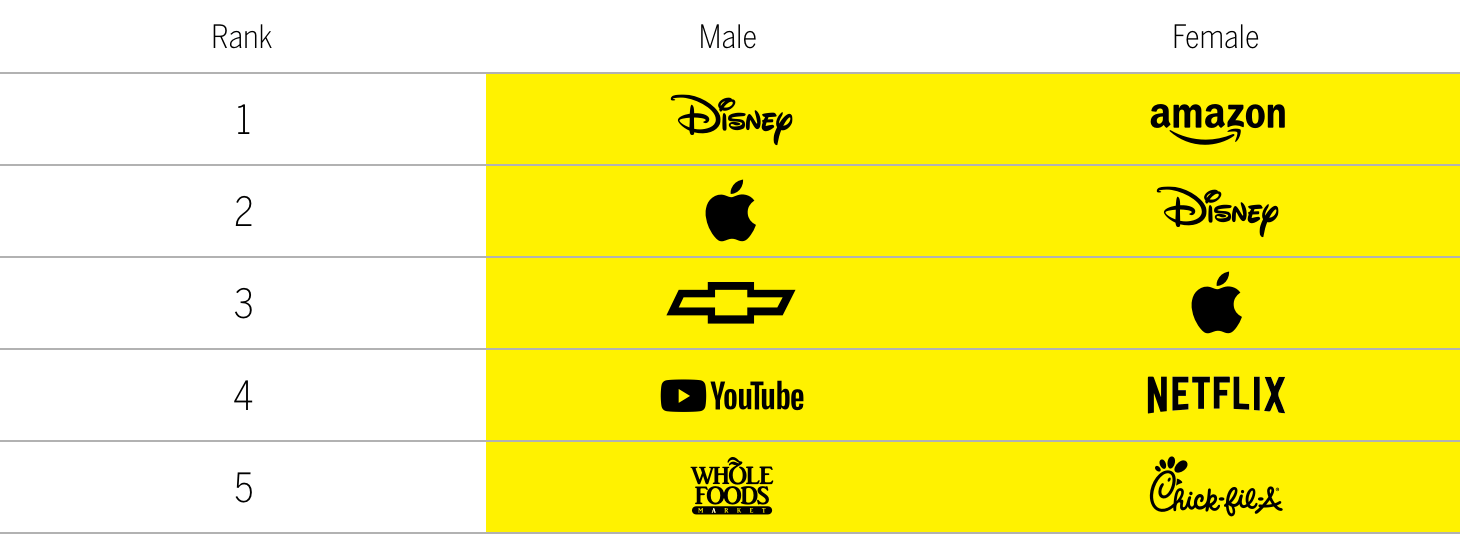
As we’ve seen with top brands like Apple and Amazon in the past, the most intimate brands tend to be those that don’t specifically target men or women because targeting one of these groups can limit a brand’s potential with the other. Disney appears to have successfully broadened its appeal among consumers, which can be particularly effective for a brand that creates content for families—the more a movie or TV show has a gender-neutral appeal, the easier it is to watch with a group.
Stronger bonds, stronger brand
In addition to having the highest average Brand Intimacy Quotient, Disney also has the largest percentage of its users in the deepest stage of Brand Intimacy: fusing.
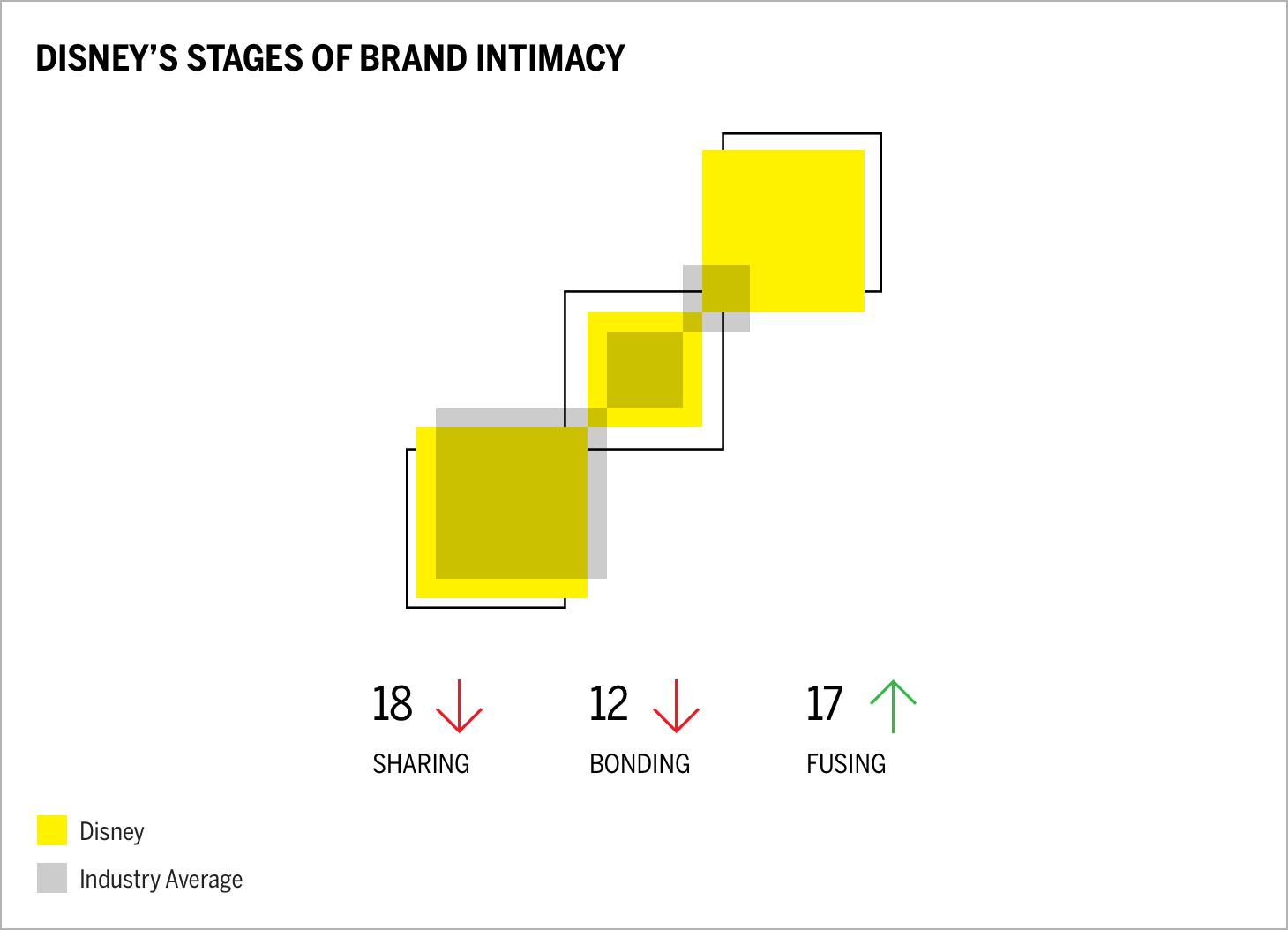
A user in the fusing stage is inexorably linked and co-identified with a brand; their identity begins to merge with that of the brand, becoming a form of mutual realization and expression. Disney’s ability to build these high-intimacy bonds with its users shows that the brand is charged with emotion, making it easy for users to strongly identify with it. The brand improved its fusing performance significantly since last year, going from 8 to 17 percent. Such a large percentage of users feeling co-identified with Disney may be related to the brand’s successful continuations of some of its younger, yet beloved, franchises, such as Wreck-It Ralph or The Incredibles. Users who saw the first installment of these series when they were younger might now feel a strong sense of attachment as to them as they evolve and grow. It could also be the result of people identifying with completely new Disney movies, like Moana or Coco, or the revamped classics like Mary Poppins Returns and The Nutcracker and the Four Realms. Whatever the motivation, there is no shortage of reasons to feel a deep connection with Disney today.
This capacity for forming deep connections with a large percentage of users serves as a significant business advantage for Disney because brands with higher rates of users in the fusing stage also have greater price resilience, with more customers willing to pay an additional 20 percent for their products or services. It’s no surprise that as Disney’s percentage of users in fusing more than doubled this year, so did its percentage of users willing to pay a premium for its products (from 10 to 21 percent). This could prove especially important in the media & entertainment industry as consumers today have access to more content than ever before and a willingness to pay extra for one brand’s movies and shows could make the difference in the decision-making process.
More potential with millennials
Media & entertainment is the most intimate of the fifteen industries in our study, with an average Brand Intimacy Quotient of 47.8 compared to the cross-industry average of 31.0. It’s even more intimate among millennials, with an average of 53.3. Four of the top five brands for millennials are media & entertainment brands, with Disney at #4 behind some of the industry’s more tech-centric brands such as YouTube and Netflix.
Top five most intimate brands by age
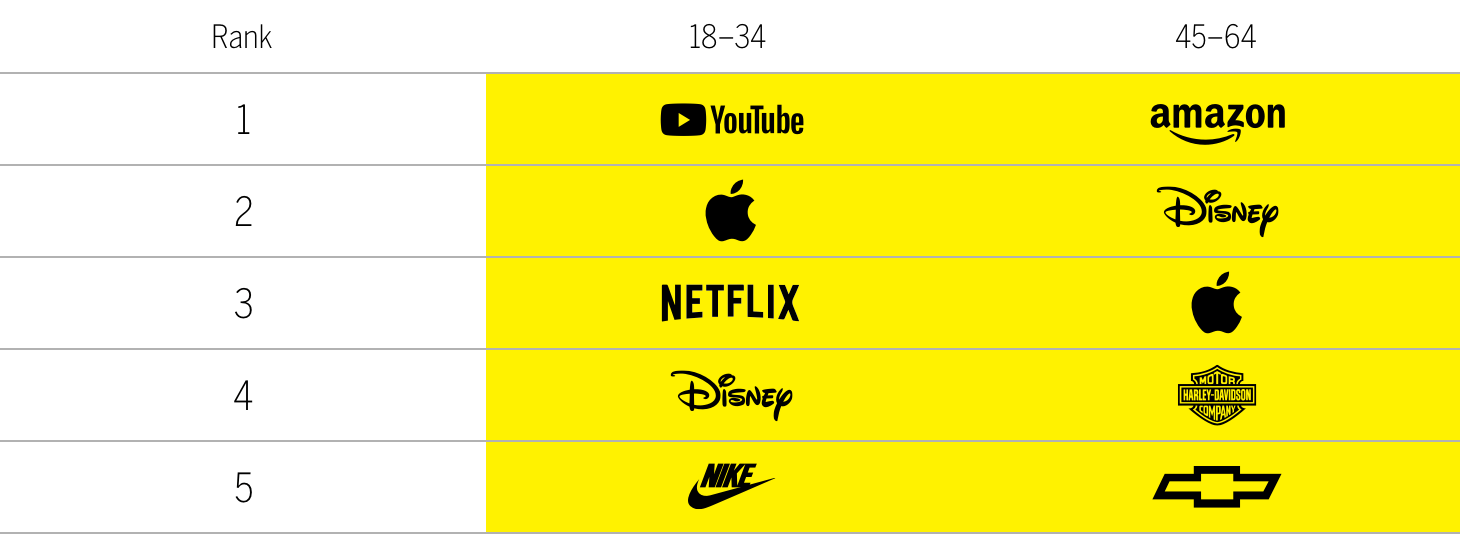
Disney is quite popular among consumers ages 45–64, coming in second place behind Amazon, but millennials’ love for the media & entertainment industry suggests that there could more opportunities for Disney to build stronger bonds with this younger demographic. The same is true for Generation Z, which is also highly intimate with media & entertainment brands. If Disney is able to create content that resonates with younger audiences as well as it has in the past, it can broaden its base of intimate users and remain relevant for years to come.
Conclusion
Disney has always been a strong, highly emotional brand. Its ability to maintain a role as a cultural cornerstone in the world is unique, and this year it has outdone itself by becoming the most intimate brand in the U.S. It’s accomplished this by capitalizing on the current appetite for escapist content, continuing to establish itself as a purveyor of nostalgia, and expanding its other core associations. It maintains a gender-neutral appeal to broaden its audience, and it has improved its cultivation of deeply emotional bonds with a high percentage of users. If the brand is able to stay on top of media trends and invest in ways to entertain younger generations, we may be witnessing the dawn of a Brand Intimacy dynasty for Disney.
Get an overview of Brand Intimacy here.
Read our detailed methodology here. Our Amazon best-selling book is available at all your favorite booksellers. To learn more about our Agency, Lab, and Platform, visit mblm.com.
